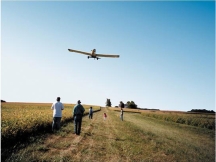Nick Bowers looked at sales of cover crop seed from his Oregon farm this year and declared “we’re up from last year but the growth has leveled off a bit, compared to previous years.”
“The good news of cover crops has encouraged newcomers to try planting them,” he said. “But with adverse weather in the Midwest, corn and beans came off the field 2 – 3 weeks late this year. That means getting a cover crop on before cold weather was more of a risk, and I think that’s what held newcomers off somewhat,” he theorized.
Bowers has witnessed the phenomenal growth in sales of annual ryegrass and other cover crops as an Oregon grower. Before he and his partner began direct sales to the Midwest, he was involved in years of on-farm research as a member of the Oregon Ryegrass Seed Growers Commission. It was the Commission’s early and consistent cover crop education and promotion that helped to launch the current boom in cover crop use, he said. During those years, he and other Oregon grass seed growers donated tons of seed and thousands of hours of their time, working with cooperating farmers in Illinois and Indiana, to find out how cover crops could positively impact corn and bean production there.
“Those more accustomed to planting cover crops weren’t phased by the late harvest this year,” he continued. “They applied the seed – most often by plane – into standing corn and beans, then hoped that rain would take care of the rest.”
Based on contact with his Midwest customers, Bowers said that it appears that annual ryegrass and other cover crops are doing well, even with the weather not being ideal.
He said that while Indiana and Illinois have been leaders in cover crop adoption, other Midwest states are coming along quickly. In January, his partner will be at the Iowa Cover Crop Clinic, in Des Moines, Jan. 27 – 30, in conjunction with the annual Power Show, scheduled for the 28th – 31st.



